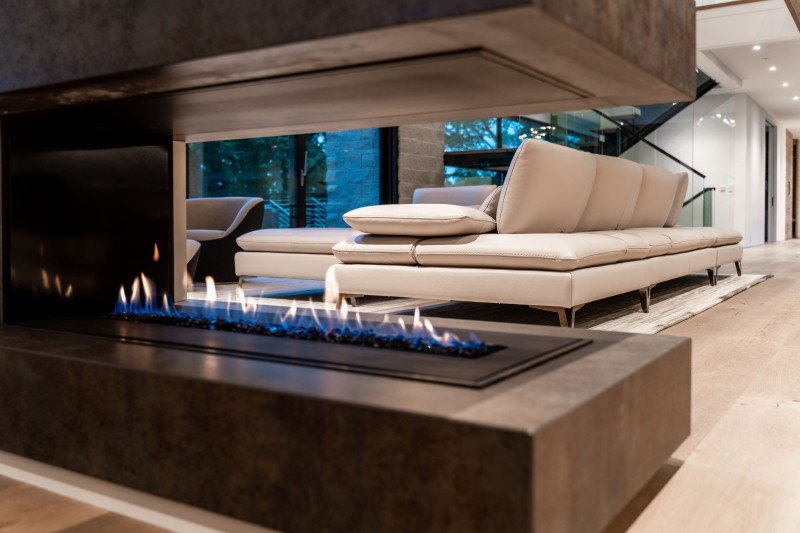A Step-By'-Step Guide For Outdoor Stoves Online
Best Value Fireplaces: An In-Depth Guide
The fireplace has actually long been related to as the heart of a home, offering heat, atmosphere, and a focal point for social events. However, browsing through various options can be overwhelming, particularly with budget plan restraints in mind. Buy Fireplace Online provides a useful guide on the best value fireplaces, detailing their types, functions, and benefits to help property owners make a sensible choice.
Kinds of Fireplaces
Fireplaces are available in a range of styles and types, each with different characteristics, expenses, and advantages. Here's a comprehensive look at the most typical kinds of fireplaces available in the market today.
Type of Fireplace
Description
Typical Cost
Pros
Cons
Wood-Burning
Burn logs to develop heat and atmosphere.
₤ 1,500 – ₤ 5,000
Authentic experience, natural heat
Requires routine upkeep, less efficient
Gas Fireplaces
Uses gas or gas to produce heat.
₤ 2,000 – ₤ 5,000
Easy to utilize, cleaner than wood
Minimal to gas supply, installation expenses
Electric Fireplaces
Replicates flames with LED innovation and produces heat by means of electrical energy.
₤ 200 – ₤ 3,000
Easy installation, setup versatility
Less genuine feel, higher operating costs
Pellet Stoves
Usage compressed wood or biomass pellets, offering an eco-friendly option.
₤ 3,000 – ₤ 4,500
Efficient, low emissions
Needs electricity to run, requires storage for pellets
Ethanol Fireplaces
Burns ethanol fuel, producing flames that don't need a chimney.
₤ 300 – ₤ 2,500
No vents required, portable
Higher fuel expense, safety issues
Elements to Consider When Choosing a Fireplace
Selecting the right fireplace is not almost visual appeals; it likewise involves practical factors to consider. Here are important factors to keep in mind:
1. Spending plan
- Determine how much you are prepared to spend. Bear in mind that setup and maintenance costs can add up.
2. Area and Size
- Guarantee the fireplace fits well within the space, considering both the space readily available and the heating requirements.
3. Fuel Type
- Pick the fuel source based upon availability, cost, and the kind of atmosphere you want to achieve.
4. Efficiency
- Select units with high-efficiency rankings to ensure you are getting the most value for your money in regards to heat output.
5. Visual Appeal
- Pick a design and style that complements existing decoration and enhances the general charm of the space.
6. Laws
- Know local policies, allows, and building codes that might impact your fireplace setup.
Top Best Value Fireplaces
Based on consumer evaluations, specialist viewpoints, and overall value for cash, here are a few of the very best value fireplaces presently readily available in the market:
1. DuraVent Pellet Stove
- Type: Pellet
- Average Cost: ₤ 2,000
- Emphasizes: Highly efficient with low emissions, making it an exceptional alternative for environmentally-conscious homeowners.
2. Napoleon B36NTR-1
- Type: Gas
- Average Cost: ₤ 2,500
- Emphasizes: This fireplace is visually enticing and highly efficient, with a smooth design and adjustable flame.
3. Duraflame Electric Heater Stove
- Type: Electric
- Typical Cost: ₤ 200
- Emphasizes: Affordable and portable, best for smaller areas or adding ambiance to a space without permanent installation.
4. Genuine Flame Juliet Gel Fireplace
- Type: Ethanol
- Average Cost: ₤ 300
- Highlights: A trendy choice for modern areas that needs no venting, making it versatile and easy to install.
5. Vogelzang VG5790
- Type: Wood-Burning
- Typical Cost: ₤ 800
- Highlights: Offers a traditional wood-burning experience with a sleek modern design, best for those who treasure the traditional ambiance.
Often Asked Questions (FAQs)
Q1: What is the most cost-effective fireplace option?
A1: Electric fireplaces tend to be the most cost-effective in terms of preliminary purchase price and installation, but can have higher operating costs compared to gas or pellet systems.
Q2: Are gas fireplaces more secure than wood-burning fireplaces?
A2: Yes, gas fireplaces typically produce less emissions and position a lower risk of chimney fires as they do not produce creosote like wood-burning systems.
Q3: Can I install a fireplace myself?
A3: While some electric fireplaces permit easy self-installation, other types, particularly gas and wood-burning designs, typically require expert installation due to venting and safety concerns.
Q4: How do I maintain my fireplace?
A4: Regular maintenance consists of cleaning the chimney (for wood-burning fireplaces), looking for gas leakages (in gas systems), and making sure correct ventilation for electric models.
Q5: Is an ethanol fireplace a great choice?
A5: Ethanol fireplaces are appealing for their modern design and ease of setup. However, they can be less efficient and more pricey to run long-lasting compared to other fuel types.
Choosing a value fireplace that fulfills your visual preferences and useful needs involves thorough research and factor to consider. By comprehending various types of fireplaces, their associated costs, and advantages, house owners can make informed choices that will not just fit their spending plan but also boost the warm and inviting atmosphere of their homes. Whether selecting an electric, gas, wood-burning, pellet, or ethanol model, the ideal fireplace awaits to change your home.
